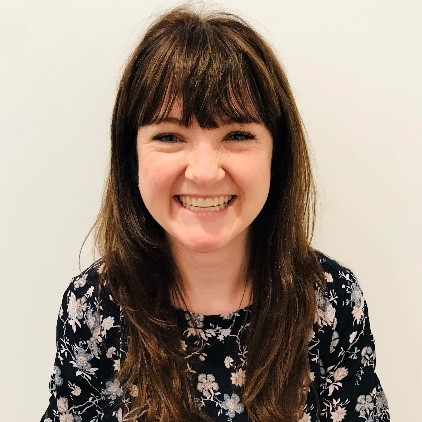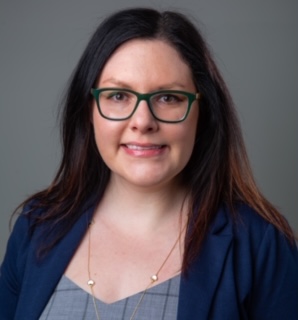Dissemination & Implementation Science
Applying a Hub-and-Spoke model framework to children impacted by unhealthy caregiver substance use: Lessons learned and next steps
(PS9-6) Applying a Hub-and-spoke Model Framework to Children Impacted by Unhealthy Caregiver Substance Use: Lessons Learned and Next Steps
- LW
Lucia Walsh Pedersen, Ph.D.
Assistant Professor of Psychology
University of Colorado, School of Medicine
Denver, Colorado, United States - MC
Maya Carter, B.A.
Research Assistant
Denver Health Hospital and Authority
Centennial, Colorado, United States 
Lisa Asbill, Ph.D.
Psychologist
Denver Health and Hospital Authority
Denver, Colorado, United States- SH
Sean Hatch, Ph.D.
Psychologist
Denver Health Hospital Authority
Denver, Colorado, United States - SC
Sydney Cople, Ph.D.
Psychologist
Denver Health Medical Center
Denver, Colorado, United States 
Sarah E. Cleary, N/A, Ph.D.
Child & Adolescent Outpatient Psychologist, Denver Health Medical Center
University of Colorado, School of Medicine
Denver, Colorado, United States- CF
Colleen Fischer, Ph.D.
Staff Psychologist
Denver Health and Hospital Authority
Denver, Colorado, United States - KD
Katy Doles, LCSW
Child and Adolescent Clinician
Denver Health and Hospital Authority
Denver, Colorado, United States - KH
Kalyn Holmes, Ph.D.
Postdoctoral Fellow
Denver Health Hospital Authority
Denver, Colorado, United States - MH
McKayla M. Harrison, Ph.D.
Post doctoral fellow
Denver Health and Hospital Authority
Denver, Colorado, United States - JS
J Christopher Sheldon, Ph.D.
Clinician Researcher
Denver Health and Hospital Authority
Denver, Colorado, United States
Author(s)
Co-Author(s)
Children exposed to caregiver unhealthy substance use are at high risk of developing behavioral health (BH) and substance use disorders (SUDs; McGovern et al., 2020). Caregiving stress and child BH concerns are also linked with a caregiver’s risk of relapse. Existing evidence suggests benefits from early recognition and access to family oriented and strengths based BH care, including improved child BH symptoms, decreased risk of caregiver relapse and overdose, and improved family functioning (Kim, Brook, & Akin, 2018; Moreland & McRae-Clark, 2018).
Despite these findings, these families are underrecognized and underserved in community and clinical settings. Screening for children impacted by CUSU is rare in pediatric primary care settings, even as screening for other social determinants of health rise (Oldfield et al., 2021). Existing family-oriented care models are rarely offered outside of residential substance use treatment settings, serve primarily mothers and young children, and focus on improvements in maternal symptomatology (Moreland & McRae-Clark, 2019). Empirically supported treatments (ESTs) are limited and rarely used in community settings (Walsh Pedersen, Niehaus, & Sheldon, 2023). Beyond these barriers, families face immense internalized stigma and overt stigma from their community (McCann et al., 2018; Smyth & Newland, 2019). This is especially true for marginalized groups, such as low-income and racial/ethnic minorities. Research suggests that psychoeducational training for families, school, community, and medical personnel may decrease stigmatizing beliefs and behaviors that impact engagement in care (Khenti, Bobbili, & Sapag, 2019; Bielenberg et al., 2021).
We will present an application of a Hub-and-Spoke framework in a safety-net hospital system to address these gaps. We used the hospital system’s existing Hub and Spoke model for the treatment of adults with Opioid Use Disorder and leveraged existing electronic health record tracking to include all caregiver substance use types, screen for CUSU in 19 federally qualified health centers, tailor Parent-Child Interaction Therapy and Alternatives for Families: a Cognitive Behavioral Therapy for these families, and design community-informed psychoeducational groups. Using repeated mixed-method approaches, we obtained stakeholders’ views of barriers to model fit, acceptability, and effectiveness, providing real-world implementation guidance. We will present initial data regarding two years of model implementation, including number of families served and key takeaways from implementation successes and failures. Findings from this work inform the uptake of similar models in this underserved population, especially in low-resourced and publicly funded settings.

.png)
